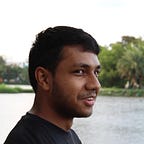My first Hackathon :
On 28th October 2017, few of my classmates and me formed a team to participate at our first-ever hackathon. Named #OpenGovDataHack, it was one of the most prestigious hackathons of India. The event was concerned with building a mobile application or an infographic based on the data-sets provided by the government of India.
Being second year students we didn’t know enough to compete in the hackathon. We believed that the 24 hour long event would be one hell of an experience, and sure it was. I being out-of-touch with Android and armed with primitive Python skills, decided to settle for info-graphics as our project.
Getting our names verified, we were ushered into a large jam-packed auditorium where our mentors (of NIC, IAMAI and Startup India) and University faculty made us understand the importance of data analysis for a big country like India. We realized despite our huge population of engineers, how less involved we are with mobile application development. After those invigorating talks, we were inspired to perform to the best of our abilities. We were a team of four members, namely Vivek, Abhik, Shubham and me (obviously!).
Selecting our topic :
After discussion with Vivek, we zeroed upon the idea of an info-graphic regarding ambulance services on our national highways.
Here are some staggering facts about road accidents in India :
- There is one death every 4 minutes due to road accidents in India.
- Highways of India which has some 726 black spots (a black spot is classified as a location on a national highway that witnesses more than 10 accidents a year)
- India has the second largest road network in the world, and over 1.3 million deaths in road accidents in the last decade.
Our Plan:
National Highways are economic backbone which facilitates transport of raw material, finished goods and essential commodities. To solve the process of easy and fast recovery of accident-like situations, we devised a solution.
For each 100 kilometres of national highway
- Two ambulance centres are placed at 25th and 75th km marks.
- Each centre houses two ambulances
- Each ambulance can reach up to 25 kms in either direction
- Thus, an 100 kms range is covered effectively.
Advantages of the proposal :
- If a massive accident occurs at a place where one ambulance won’t suffice, two ambulances can rush in from opposite directions at the same spot.
- Maintaining a 80 km per hour speed limit, ambulances can reach the spot well within 20 minutes.
The feasibility of our plan is surely under question. However, possible alternatives to the plan will be
- Reduce the number of ambulances per centre to one from two.
- A centre can have two types of ambulances, one small and another big one.
(These ideas require further brainstorming and research, due to paucity of time and experience we restricted ourselves to mere suggestions based on rudimentary facts.)
Technology used :
- Python : particularly CSV module (for data analysis)
- MS Excel : (for spreadsheets)
- Visme : https://www.visme.co/ (for info-graphics)
- MS Powerpoint (for presentation)
Distributing the job:
This was possibly the most difficult part.
- Vivek : Browsed through relevant data-sets.
- Shubham : Searched for the right website to make our info-graphic.
- Abhik : Prepared the presentation to pitch our idea; and
- Me : Processed the data-sets, to churn out relevant facts and figures.
Due to mid-semester examinations Shubham left us after a few hours for his preparation. Vivek took up the work of creating the info-graphic. Abhik was busy in preparing the presentation and bringing us refreshments. As far as exchange of ideas with our peers and mentors goes, Abhik really had a nice time of interaction (often at the cost of the assigned job). I limited myself to get my Python code work somehow. After the dinner, I and Vivek was so hopeless that we almost got our bags packed to head off to our hostels and leave the hackathon. Abhik, possibly having a lovely time there, thwarted our motive. We worked with our last remaining ounce of energy till dawn. Almost everyone in there retired to have some power-naps but we were awake the whole night. Occasionally, our classmates from other teams came to see-off to ease out their (ours, too) stress.
Next day :
Sacrificing that night’s sleep came at a heavy price though. We were so tired we fled to our hostels to have a tight sleep, thinking we’ll return to present our ideas later. Abhik, was our last surviving hero, who we convinced to stay there. He pushed the project to OpenForge, platform for open collaborative software development of e-Governance applications, with assistance from mentors.
However, even Abhik needed to come back. Despite repeated calls from the volunteers of the event, we slept through the entire afternoon and missed the time-slot for our infographic presentation.
In the evening, we again gathered in the auditorium for the felicitation and award announcements. I met a few seniors there and got some valuable advice.
After-thoughts:
Overall experience was memorable (read agonizing). I learnt that there’s no point attending hackathons without proper knowledge of the essential technologies. Moreover, giving up halfway through the event was totally an unprofessional conduct from our part. It instilled in me a passion to discover more about data analysis and Android development. It was all about pushing my limits to the extreme. Being socially awkward in most cases, I not only had an insight into team management skills but also how to start creating important connections.
Oh and don’t forget to check out our info-graphic.
